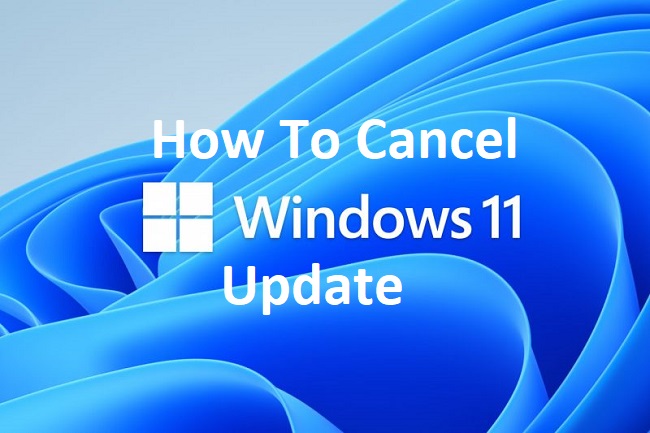Windows 11 is Microsoft’s latest operating system, but not every user is ready to make the leap from their current version of Windows.
Whether it’s compatibility issues or simply a preference for your current OS, you may find yourself needing to cancel the Windows 11 update. This comprehensive guide will provide you with detailed steps on how to do just that.
Microsoft has designed Windows 11 to be a seamless upgrade from Windows 10, offering numerous new features and improvements. However, it may not be the right time for every user to make the switch.
A sudden update to Windows 11 could disrupt your workflow or create compatibility issues with certain software. Therefore, knowing how to cancel the Windows 11 update can be a crucial skill for maintaining control over your computer’s operating system.

Causes for Windows 11 Update Error
There are several reasons why one might want to cancel the Windows 11 update:
Compatibility Issues: Not all software and hardware are immediately compatible with new operating systems. Waiting until all your essential programs and devices are confirmed compatible with Windows 11 can save a lot of headache.
Unwanted Changes: While Windows 11 does bring many improvements, it also comes with changes that not all users may appreciate. Sticking with a familiar OS can be more comfortable.
System Performance: Older computers may struggle to perform optimally with a new operating system. Cancelling the update can maintain your system’s performance.
Solutions on How to Cancel Windows 11 Update
Now, let’s go through the steps to cancel the Windows 11 update:
Solution 1: Using Windows Update Settings
Step 1: Click on the Start button and select ‘Settings’.
Step 2: In the Settings window, choose ‘Windows Update’.
Step 3: If the Windows 11 update is scheduled, you will see it listed under the ‘Scheduled Updates’. Click on it.
Step 4: An option to ‘Pause updates for 7 days’ will appear. Click on it to postpone the update.
Solution 2: Using Group Policy Editor (Windows 10 Pro and Enterprise)
Step 1: Press ‘Windows key + R’ to open Run dialog, type ‘gpedit.msc’ and press Enter.
Step 2: Navigate to ‘Computer Configuration > Administrative Templates > Windows Components > Windows Update > Windows Update for Business’.
Step 3: Double-click on ‘Select when Preview Builds and Feature Updates are received’.
Step 4: Set the option to ‘Enabled’ and choose the number of days you want to defer a feature update.
Step 5: Click ‘Apply’, then ‘OK’.
Solution 3: Using Registry Editor (Windows 10 Home)
Step 1: Press ‘Windows key + R’, type ‘regedit’, and press Enter.
Step 2: Navigate to ‘HKEY_LOCAL_MACHINE > SOFTWARE > Microsoft > WindowsUpdate > UX > Settings’.
Step 3: Right-click on ‘Settings’, select ‘New > DWORD (32-bit) Value’.
Step 4: Name this new value ‘DeferFeatureUpdatesPeriodInDays’.
Step 5: Double-click on this new value and set the ‘Value data’ to the number of days you want to defer the update. Click ‘OK’.
Note: Editing the registry can be risky, and should be done with caution.
Conclusion
While Windows 11 is designed to bring many enhancements, knowing how to cancel the update gives you control over when and if you decide to upgrade.
This step-by-step guide offers multiple methods to help you navigate the Master the art of cancelling a Windows 11 update with our comprehensive guide.
Learn why you might want to cancel, from compatibility issuesprocess. Remember, it’s always best to back up your system before making any significant changes.


